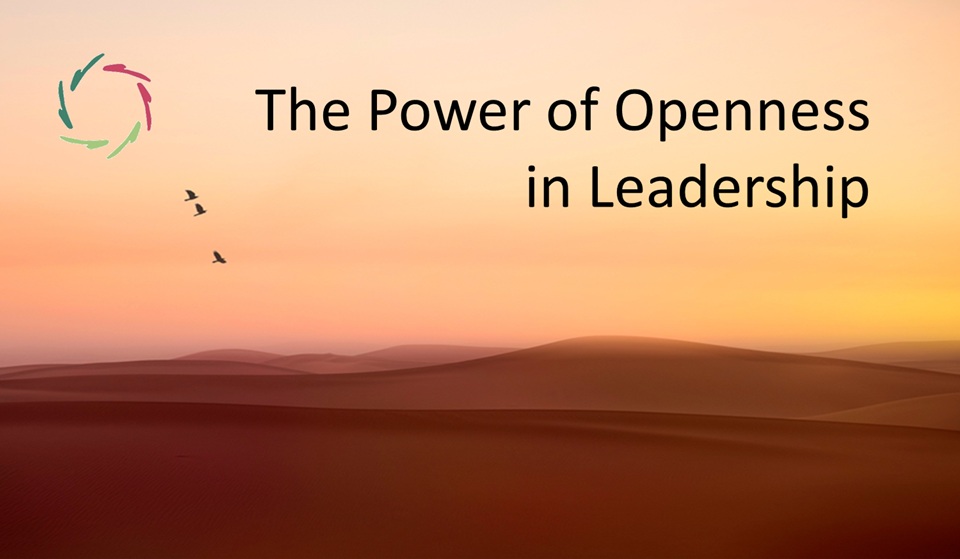An Open Leader Is a Listener

The importance of authentic communication is boundless.
You know the difference between verbal and nonverbal communication. The former consists of words. The latter is everything else. A more subtle difference exists between the conceptual and the non-conceptual. The first category deals with everything that is easily converted into concepts The second category deals with the rest. Both these differences seem fairly alike but that is not the case.
Seeing
Listening. Perceiving everything that is coming your way. A beautiful illustration is actually even another sense: eye-vision. Seeing. At this moment you are reading the letters of this text. Please do keep on reading. Keep the focus of your field of vision on these letters. In the meantime, bring a bit of your attention more to the periphery of your field of vision. Aha. The world hasn’t disappeared… You not only see these letters now, but also a lot more around yourself, however a bit more blurred. Well, at this moment this wider field of vision is more or less ‘conceptual’. When you started reading this paragraph (starting with the word ‘Listening’) it wasn’t. At the end of this text it isn’t either. This is only a small example of the overwhelming amount of information that continuously comes to you. This involves what you hear, what you feel, what you taste, what you smell, what you think… Even especially the latter: all associations you make by reading this seemingly simple text.
Only a part of all of this reaches your consciousness in a conceptual way. The rest remains in all sorts of peripheries.
The words you are reading now, are being apprehended considerably conceptually by you at this moment. All sorts of associations are, while you are fluently reading this, less – or even not at all – conceptually present in your conscious attention. Compare the conscious thinking with the focus of your field of vision. You can then compare the unconscious with the periphery of your field of vision, with what you can see when you turn your head or when you are going somewhere else, with what you might never see or even with what you never can see somewhere else in the world. Still it is present in your mental world and is even determining for all sorts of decisions you take.
Also when you listen, only a part of the total communication enters your consciousness.
The facial expressions, the whole ‘presence’ of the other is full of information. Therefore it is important that, despite all modern means of communication, people also actually see each other, preferably in the same space even. Most certainly when there are important decisions to be made. But also in the mere verbal by itself, an abundance of non-conceptual information is present. Openness is embodied in a modern idea of ‘empathy’, as an important element of true open leadership.
This is actually what Open Leadership is about.
‘Openness’ is not just a theoretical given. It is a very practical quality.
One that largely determines the difference in quality of leadership. It is without any doubt partly genetic. However it is also, to a large extend, to be learned. Since it transcends the conceptual, it is difficult to be taught / studied from a merely conceptual framework. There are no rules. On the contrary: when you try to translate it into rules, you will only conclude that the rules you created are getting in the way. It is about something that is ‘done with’. That, of course, is not the same as ‘irrational’. Compare this to a flower. Is a flower ‘rational’? Not really. Is it ‘irrational’? It isn’t either. It is what it is. One can, at the other hand, think about the flower and study it in detail.
Feedback is also a part of listening. A lot of feedback is often unconsciously given, ‘automatically’ .
For example through the enlargement of the pupil of an eye or the lack of it. Studies show that this little element already holds important communication while the subject him/herself is not even aware of this. What is important about feedback is the first half second after primary communication. This is unconsciously perceived by the other person as spontaneous, not-calculated. One does not have direct control over it. All in all it is better to not try to control it. That would be manipulative, while this deals with how you are as a person and an authentic leader. Consciously and unconsciously, all studies covering this matter show that authenticity is the most important quality that people search for in a leader.
One can of course fake leadership just like one can fake an orgasm.
However then it’s not leadership, nor is it an orgasm. In the end who benefits from this?


